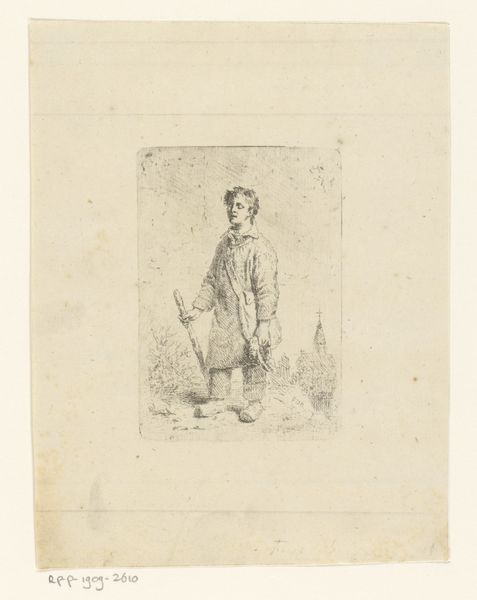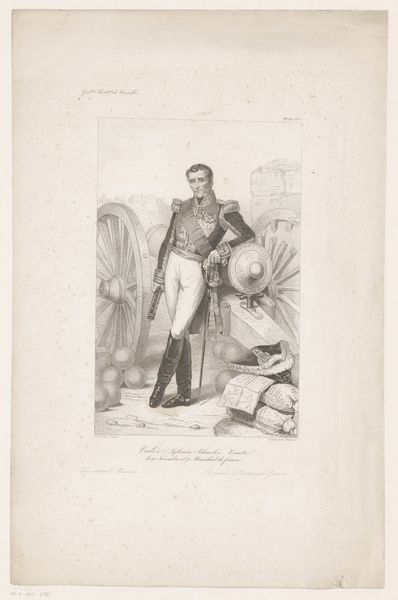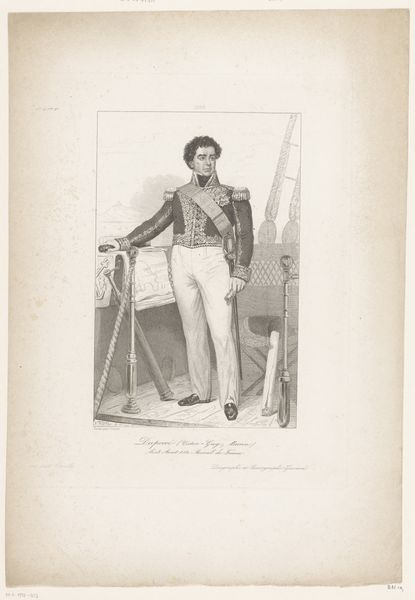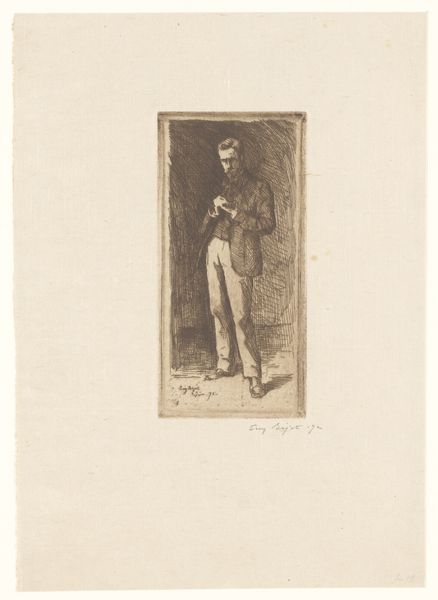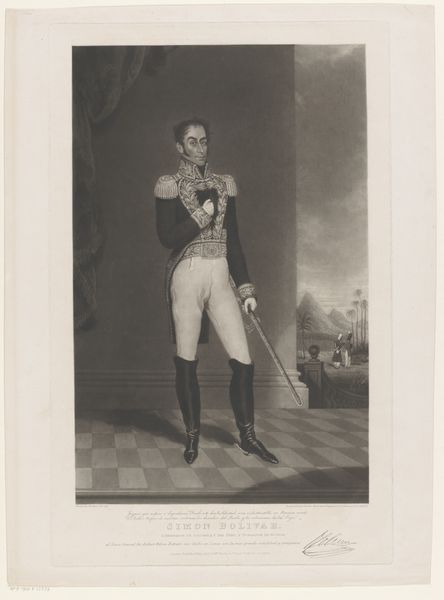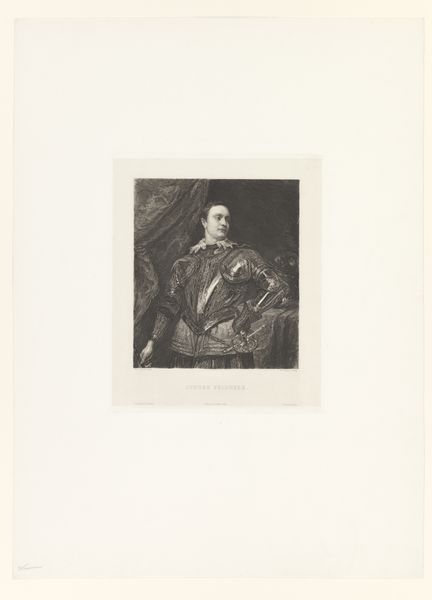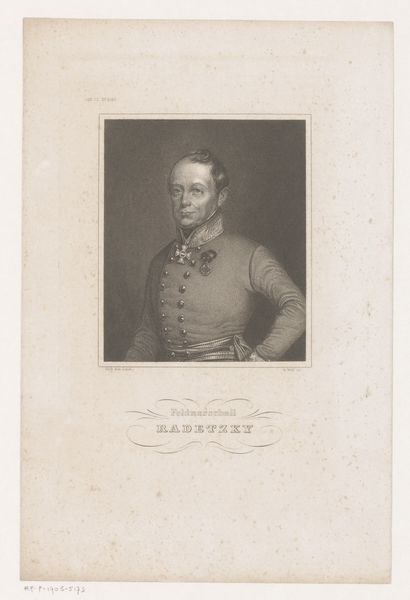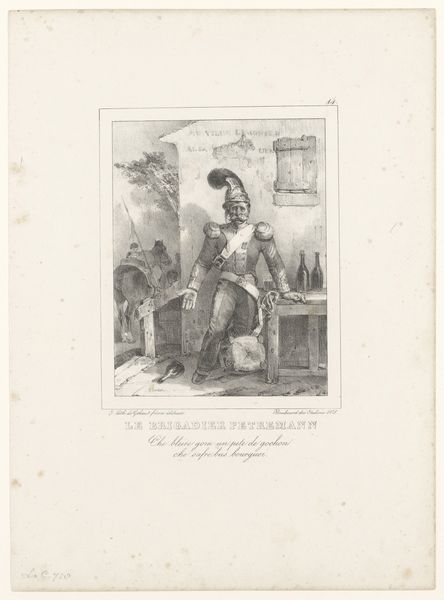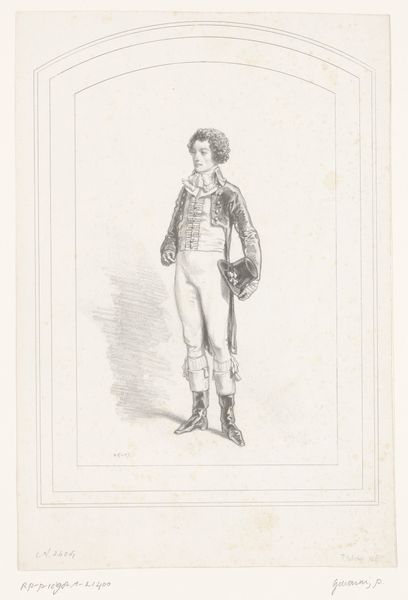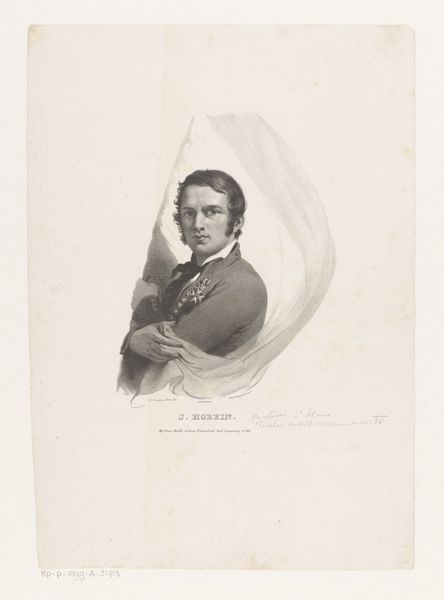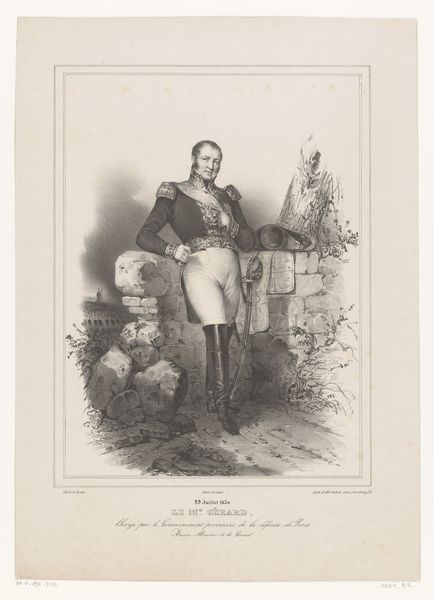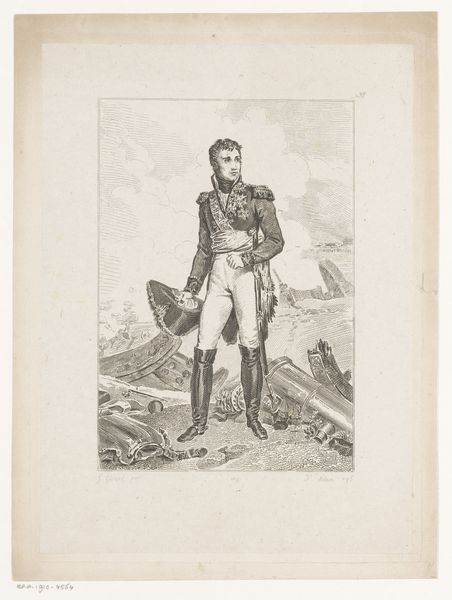
Dimensions: height 241 mm, width 158 mm
Copyright: Rijks Museum: Open Domain
Curator: Here we have Hendrik J. Van der Borcht’s “Heer in een Park”, or “Gentleman in a Park”, possibly dating from between 1882 and 1886. It's an engraving, rendered in the Romantic style. Editor: It strikes me as very melancholic. There's a sense of isolation, despite the idyllic setting. The stark contrasts of light and shadow, combined with the almost rigid pose of the gentleman, give it an air of pensiveness. Curator: Romanticism, particularly as it manifested in the late 19th century, often grappled with these sorts of introspective themes. Van der Borcht would have been exploring the individual’s relationship with nature, but also, more subtly, the societal roles and expectations placed on men of that era. Notice the man's formal attire, juxtaposed against the natural backdrop. Editor: Exactly. The park isn’t a place of liberation, but almost a stage for him. And that’s reflected in the almost theatrical pose and lighting, making him a spectacle of societal performance. The print feels incredibly aware of class and power dynamics. What narratives were circulating at the time, particularly around masculine identity? Curator: Well, industrialization brought shifts in societal roles, generating uncertainty, especially for the bourgeois class. There was a fascination with the "ideal" man: cultured, responsible, but also sensitive. This image might then be seen as commentary on the anxieties and self-awareness of that archetype. Editor: Absolutely. The statue to his side amplifies that too, implying legacies and traditional ideals. He’s weighed down by them, and perhaps that’s why the image has this distinct emotional texture. It's more than just a portrait; it's a depiction of the burdens of identity and expectation. Curator: Precisely. It invites us to reflect on the constraints and contradictions within which individual identities were constructed and performed within a broader societal framework. Editor: It does, and its power lies in making those very structures feel tangible, almost as another character within the print itself. Curator: Yes. Van der Borcht offers not merely a representation, but an insight into the spirit of his time, viewed through the lens of the individual. Editor: Leaving us with more to consider than first meets the eye, a true glimpse into an era wrestling with modernity.
Comments
No comments
Be the first to comment and join the conversation on the ultimate creative platform.

